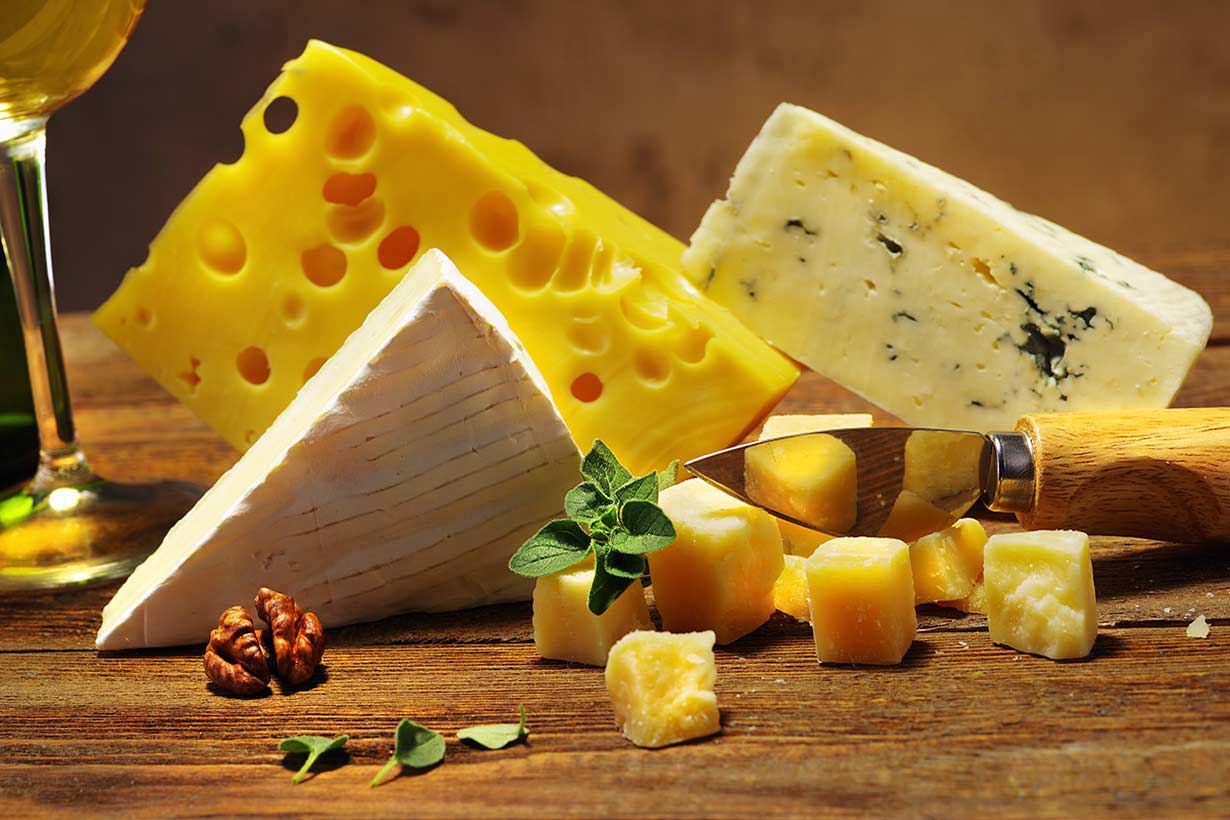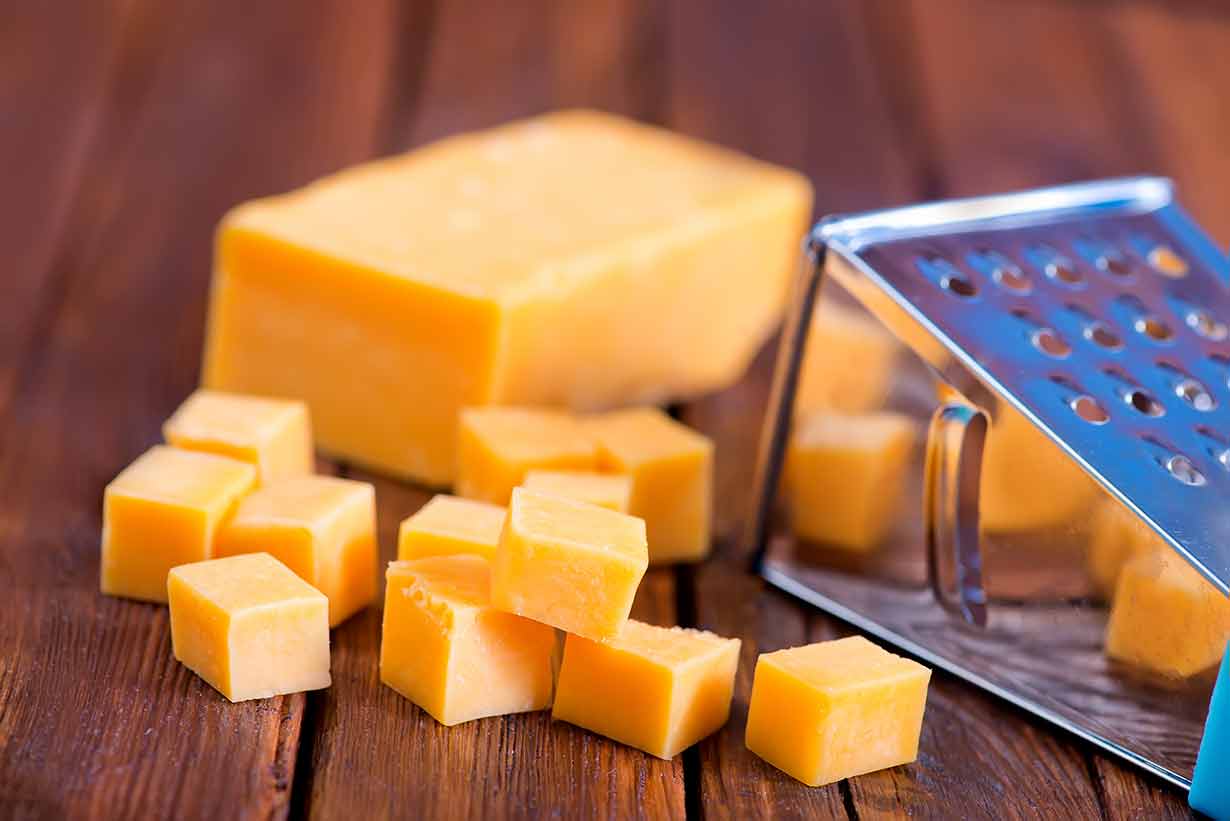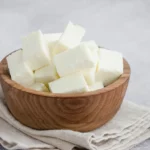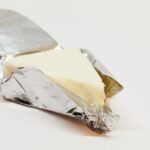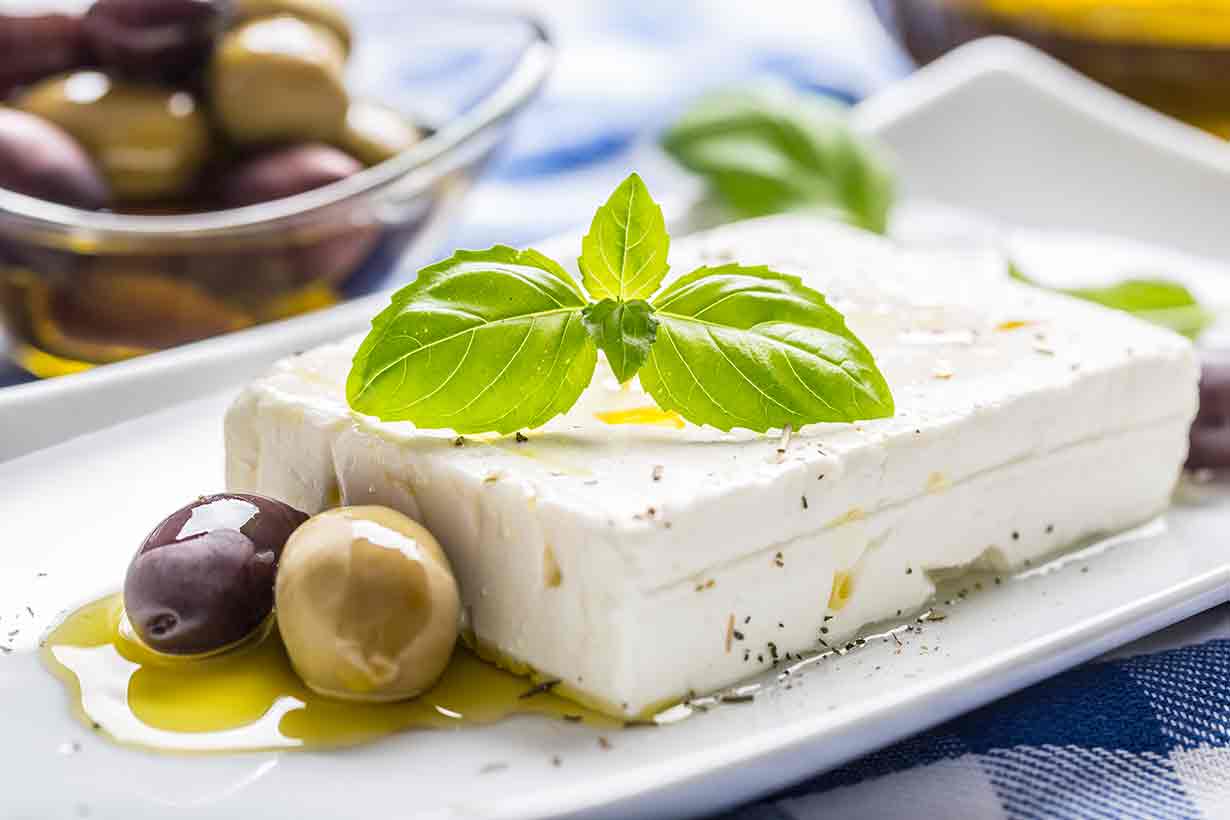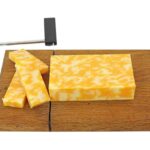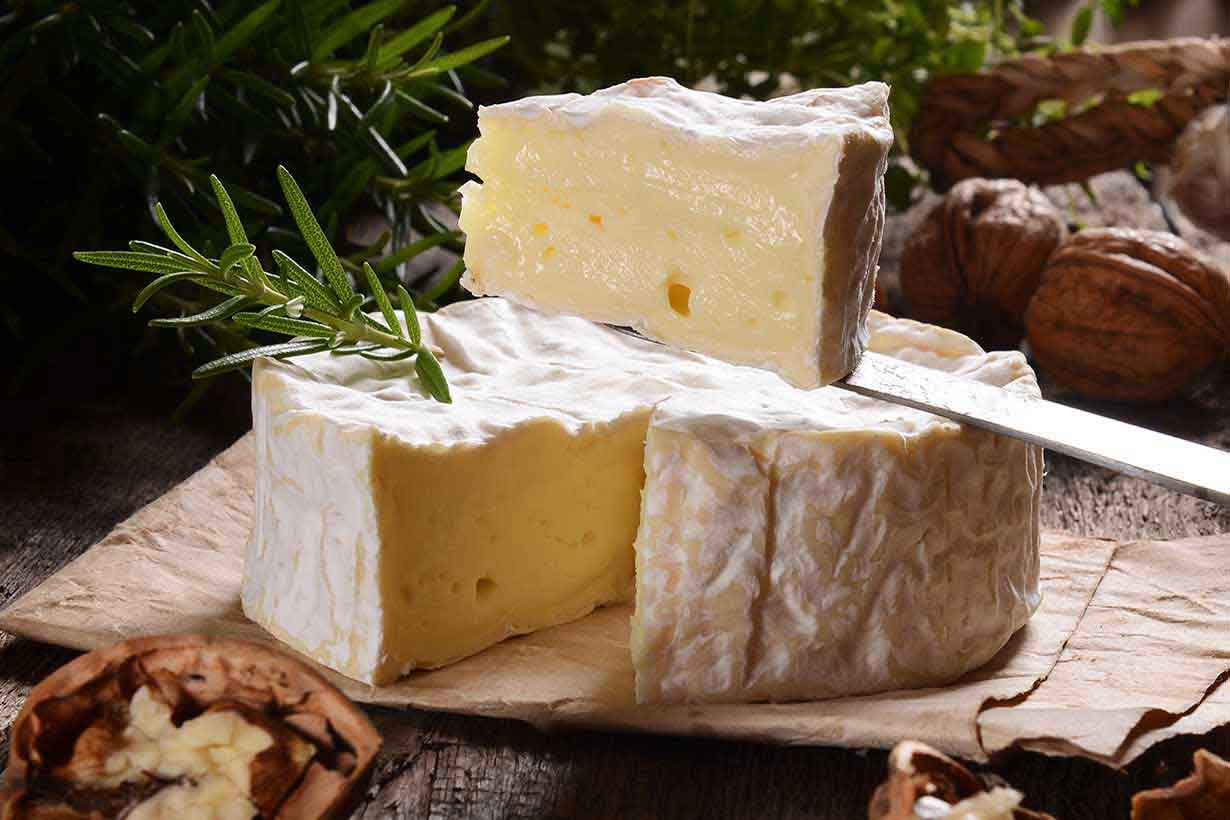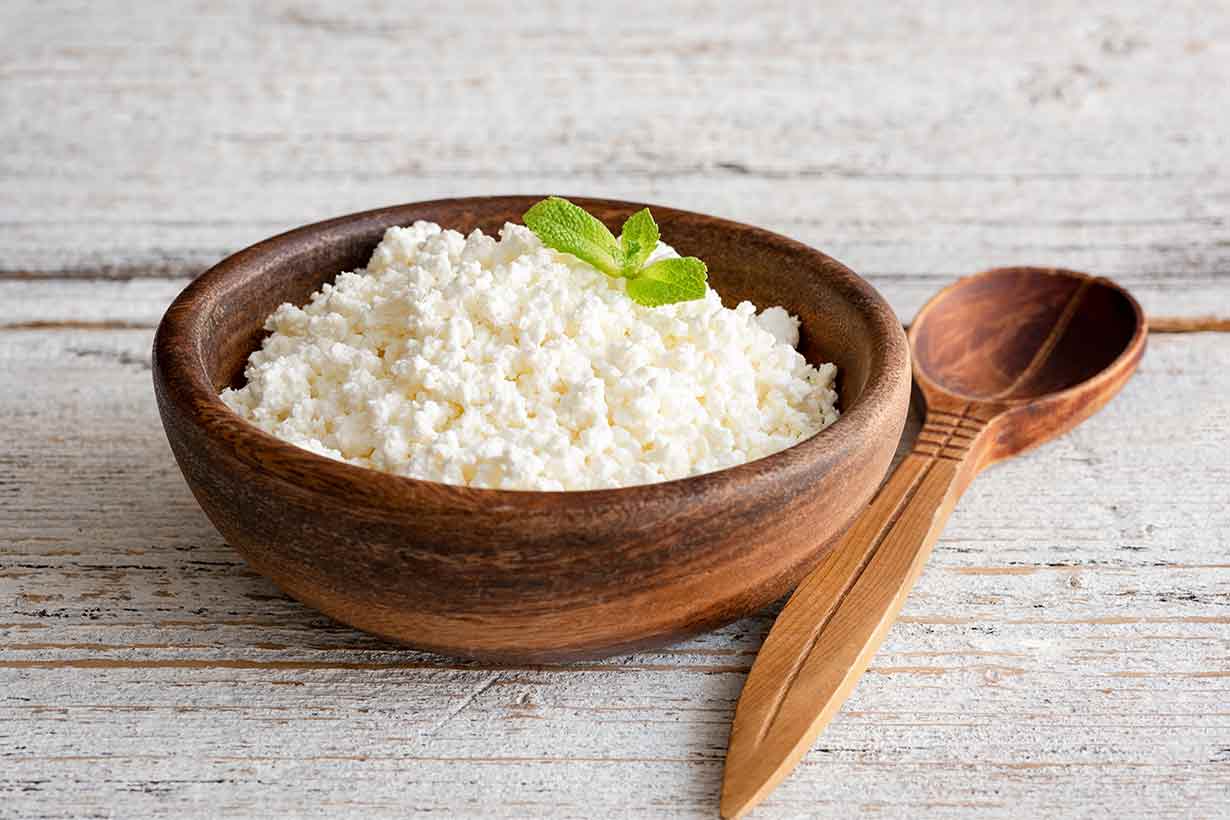Halloumi is a famous Cypriot cheese that has grown in popularity in recent years.
The cheese has unique properties, and it can be used in several ways that many other types of cheese cannot.
This article looks at halloumi’s characteristics and nutritional properties, along with some ways to use it.
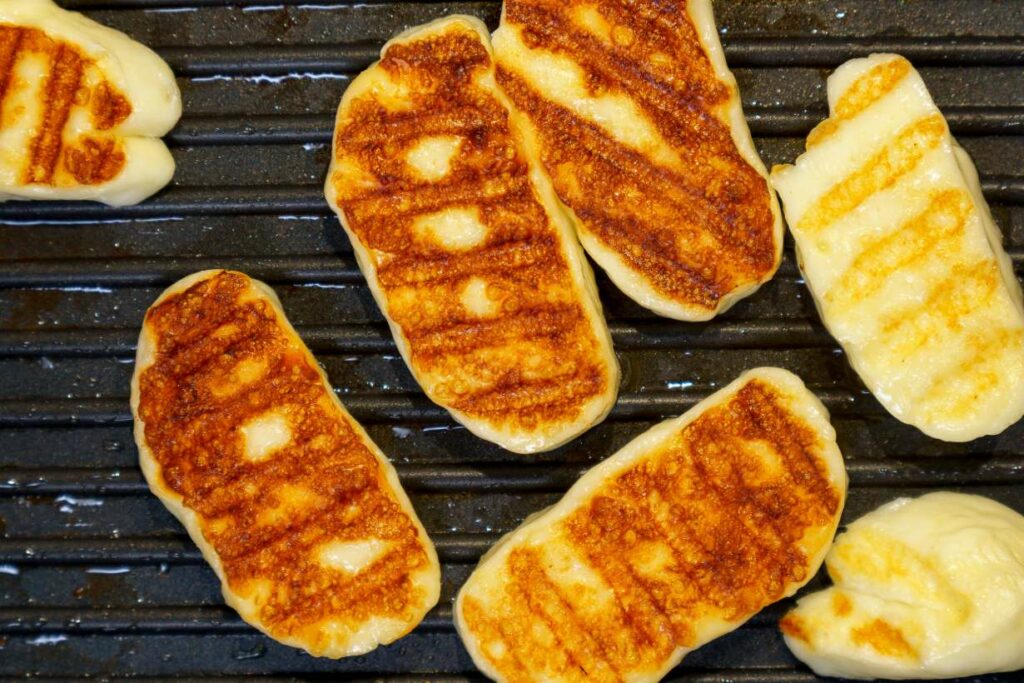
Table of contents
What Is Halloumi Cheese?
The origins of halloumi lie in Cyprus, where it is traditionally made from sheep milk (1).
However, not all halloumi producers follow the traditional production methods, and some may use cow milk.
The vast majority of commercial halloumi use pasteurized milk to minimize potential risks from bacterial pathogens (2).
Halloumi has a semi-hard texture, and unlike most cheese, it is commonly cooked rather than eaten cold. This is because, unlike most cheese, halloumi does not melt at regular cooking temperatures.
Within the European Union (EU), halloumi has a protected designation of origin (PDO) that stops cheese made outside Cyrpus from calling itself halloumi (3).
Outside of the EU, there are registered trademarks in countries including the United Kingdom and the United States that serve a similar purpose (4, 5).
Halloumi comes packaged in brine, and the cheese is particularly popular in the Middle East. However, it has also become more and more popular worldwide over recent years.
For example, the value of halloumi exports in 2013 was 76 million euros ($118 million), but these exports had more than tripled to 260 million euros ($404 million) by 2020 (6).
One of the most popular ways to eat the cheese in Cyprus is ‘Saganaki;’ halloumi fried in a small frying pan.
Nutrition Facts
Based on the Composition of Foods Integrated Dataset (CoFID) data, the nutritional values per 100 grams of halloumi cheese are shown below (7).
All daily values were calculated using this nutrition data and the FDA’s published daily values (8).
| Name | Amount (kcal/grams) | % Daily Value (%DV) |
|---|---|---|
| Calories | 311 kcals | |
| Carbohydrates | 1.7g | <1% DV |
| Fiber | 0 g | 0% DV |
| Sugars | 1.7 g | |
| Fat | 23.5 g | 30% DV |
| Saturated | 16.6 g | 83% DV |
| Monounsaturated | 5.7 g | |
| Polyunsaturated | 1.1 g | |
| Omega-3 | 0.15 g | |
| Omega-6 | 0.83 g | |
| Protein | 23.9 g | 48% DV |
Light Halloumi: Fewer Calories and Less Fat, Yet More Protein
In addition to regular halloumi, it is also possible to buy ‘light halloumi’ that has a somewhat similar taste but contains fewer calories.
‘Lighter’ reduced-fat versions of halloumi contain fewer grams of fat, but they offer a higher protein content. On the downside, these ‘light’ varieties are different from traditional halloumi and don’t taste quite as good.
According to the Cronometer Community Database (CRDB), a typical ‘light halloumi’ has the following nutritional values per 100 grams (9):
- Calories: 277 kcal
- Carbohydrates: 2.7g
- Sugars: 2.7g
- Fat: 18.3g
- Saturated: 13.0g
- Protein: 25.7g
As shown, the nutrition profile does not significantly differ from regular halloumi.
The ‘light’ version contains fewer calories and grams of fat and saturated fat, and it provides a bit more protein.
Halloumi Is An Excellent Source of Vitamins and Minerals
In addition to being a protein-rich cheese, halloumi also provides a broad range of essential vitamins and minerals.
Based on CoFID data, here is the micronutrient profile for halloumi cheese per 100 grams (7).
Vitamins
- Vitamin A RAE*: 36% of the daily value
- Riboflavin (B2): 30% DV
- Vitamin B12: 21% DV
- Biotin: 17% DV
- Pantothenic acid (B5): 8% DV
- Vitamin E: 4% DV
- Thiamin (B1): 3% DV
- Vitamin D: 1% DV
- Niacin (B3): 1% DV
(* RAE = Retinol Activity Equivalent)
Minerals
- Calcium: 61% DV
- Phosphorus: 41% DV
- Sodium: 51% DV
- Iodine: 40% DV
- Zinc: 34% DV
- Selenium: 22% DV
- Magnesium: 10% DV
- Potassium: 2% DV
- Manganese: 2% DV
Halloumi Has a Very High Salt Content
While halloumi is a nutrient-rich cheese, it does contain significant amounts of salt.
All cheese varieties are moderately high in salt, but since halloumi is stored and packaged in brine, it is extra salty.
On a per-100-gram basis, halloumi contains 1200 mg of sodium, representing over 50% of the recommended daily value (7).
1200 mg of sodium is equivalent to three grams of salt.
Sodium is an essential mineral, and it is not inherently “bad.” However, consuming excessive amounts of salt will typically increase blood pressure (10, 11).
These blood pressure increases can be particularly significant for individuals who are what is known as ‘salt sensitive’ (12).
Thus, individuals watching their sodium intake should consider the salt levels in halloumi and consume in moderation as appropriate.
Taste and Texture Characteristics
Halloumi is a semi-hard cheese. It has a unique firm and chewy texture and a rubbery, elastic mouthfeel.
Halloumi has also been described as “squeaky” when chewing it due to the unexpected squeaky sound it makes between the teeth.
According to NewScientist, the explanation for this squeaky noise is as follows (13):
“The cheese is rubbery and as your teeth begin to squeeze it, the halloumi deforms with increasing resistance until it loses its grip and snaps back to something like its original shape. At the point where the slipping stops it regains its grip and the process repeats, commonly at a frequency near 1000 hertz, give or take an octave or two. The vibration produces a squeal of corresponding frequencies that may vary with the circumstances.”
Source: https://www.newscientist.com/lastword/mg21228421-800-squeaky-cheese/
However, halloumi isn’t the only cheese with these properties, and fresh cheese curds have the same ‘squeaky’ texture.
Halloumi has an enjoyable and relatively mild, yet salty and slightly tangy, taste. This taste is somewhat similar to Feta cheese but richer, saltier, and firmer.
Pan-frying halloumi can give the cheese a crispy outer layer and a slightly caramelized taste, depending on how long it cooks and the use of any marinades.
Why Doesn’t Halloumi Melt?
One of the exciting aspects of halloumi’s properties is that the cheese doesn’t melt at high heat temperatures.
Unlike cheese such as Cheddar, halloumi will retain its form and won’t melt when exposed to heat.
Furthermore, the cheese can even be fried without melting. The effects of frying halloumi will look something like the following:
- The halloumi will become warm while keeping its shape.
- The edges of the cheese will become more crisp, while the inside will soften without melting.
- After a minute or two, the sides of the halloumi will start to brown.
But why doesn’t halloumi cheese melt similarly to how other cheese would?
The simple reason is that, although halloumi can melt, it has a melting point higher than the average cooking temperature.
Halloumi develops its high melting point through its unique production process, which involves (14):
- Removing the whey from the curd
- Cutting the cheese curd and pressing them into cube-shaped blocks
- Cooking the curd blocks in the whey liquid
Ways To Cook Halloumi
In addition to its other beneficial properties, halloumi is a very versatile cheese that we can use in various ways.
It is possible to cook halloumi in any of the following ways:
- Pan-frying: add a little oil to a pan and fry the halloumi for one to two minutes until it starts to brown. At this point, flip the cheese over and repeat with the other side. Pan-frying halloumi in this way will give the cheese a crisp outer layer and a soft center.
- Deep-fried: perhaps surprisingly, it is also possible to deep-fry halloumi in a breadcrumb coating. Foods such as halloumi fries are made in this way. There are many recipes available online if this sounds like something worth trying.
- Baked: brushing halloumi with a marinade (such as chilli sauce) and then baking it in the oven is a popular way to cook the cheese. A cooking time of 10 minutes at a temperature of 200°C (392°F) is about right.
- Barbecue/grill: barbecuing or grilling halloumi is easy and simply involves cooking it on both sides for a few minutes each.
- In a stew: simply add pieces of halloumi into a dish and allow to cook.
How To Use Halloumi
Using the above-listed cooking methods, here are some ways in which we can use halloumi:
- Saganaki: saganaki (Greek) is a type of small appetizer, and it is commonly a simple fried firm cheese such as halloumi.
- Salad: Adding pieces of halloumi to a colorful salad can add a rich souce of protein and flavor.
- Curry: halloumi can be substituted into a curry as a replacement for beef, chicken, or other types of meat. The cheese will absorb some of the curry flavors and offer a new texture experience.
- Stew: adding cubes of halloumi to a stew can work well, particularly when there are lots of flavors to absorb.
- Halloumi fries: halloumi fries have become very popular over recent years. It is possible to buy them ready-made and making a homemade version requires minimal effort.
- In burgers: slices of halloumi can be used in burgers, either as a replacement for the meat or as an addition.
- Sandwiches: halloumi can work well in sandwiches. A HLT (halloumi, lettuce and tomato) is a good combination.
Frequently Asked Questions
It is perfectly possible to eat halloumi straight from the package without any form of cooking. There is no reason we cannot eat it in this way, and it still tastes good. However, cooked halloumi has an even better taste, so it is often fried or grilled.
Most people enjoy halloumi hot, but whether you eat the cheese hot or cold depends on personal preference.
Halloumi is a very salty cheese, and it contains more salt than most other cheese varieties. However, it may be possible to reduce the salt content slightly by soaking halloumi in water for several hours before using it. Doing this will help rinse away some of the salt from the brine that the cheese comes packaged in.
For someone with a healthy dietary pattern that needs a bit more protein and calcium, halloumi would be an excellent choice. On the other hand, if someone is already consuming excessive amounts of salt and trying to cut down, it would be better to opt for a different type of cheese. In short: whether halloumi is “healthy” or not depends on the individual and the overall dietary pattern.
Most cheese bought from the local store will melt when heated. However, several types of cheese don’t melt at typical cooking temperatures. One of the most famous is paneer—a soft cheese from South Asia that does not melt.
Final Thoughts
Halloumi is a delicious and nutritious cheese from Cyprus. It is an excellent source of protein, calcium, and various other vitamins and minerals.
On the downside, it has a very high salt content, which may be an important factor for individuals moderating their salt intake.
Aside from its nutritional properties, halloumi is a versatile cheese product that can be used in numerous tasty ways.

